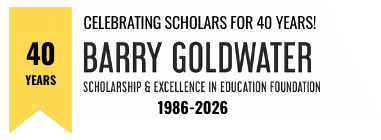Sara Fridovich-Keil | 2016 Goldwater Scholar
In 2016 as a sophomore studying electrical engineering at Princeton, I was delighted to learn that I was named a Goldwater Scholar. I have always tried to involve myself in research that I find intellectually enjoyable and that will have a meaningful impact on my field and on society.
In my first two years as an undergraduate, I had the opportunity to work with Professor Barry Rand on semiconductor device projects that ranged from fundamental – characterizing the carrier concentration and mobility in thin-film zinc oxide as a function of its growth parameters by atomic layer deposition – to applied – increasing the out-coupling efficiency of an organic light emitting diode by tuning the refractive index of one of its layers. The breadth and depth of these projects, combined with the mentorship of Prof. Rand and the support of the Goldwater scholarship, led me to explore research possibilities in electrical engineering even further. I began to read papers and understand the strengths and limitations of the state of the art in the field, realizing through my research I might be able to address some of the limitations.
As I read those papers, I was inspired by recent work on video magnification, a signal processing algorithm for detecting vital signs like heart rate from minute temporal changes in ordinary videos of people’s faces. The possibility of a video-based heart rate measurement fascinated me. Could this be a step towards true telemedicine? I could, however, see challenges, as the existing method was slow and error-prone. I worked with Professor Paul Cuff to replicate and improve upon prior work, demonstrating improved heart rate measurement accuracy on a dataset of videos I collected from 50 participants. At this point, I was hooked on a career in electrical engineering as I could see the value of this work to me and to society.
Although I had improved the accuracy of heart rate measurements using face videos, even the improved accuracy fell short of medical standards. I worked with Professor Peter Ramadge on my senior thesis project which focused on fingertip (rather than face) videos and introduced a novel algorithm that combines two signals instead of relying on one. By collecting videos and heart rate measurements from 62 participants, I obtained a substantial reduction in the rate of erroneous measurements (from 6% for the most accurate commercial app to 4% for my algorithm). Excited by this result, I published my findings (IEEE GlobalSIP 2018) and made my code available online (github.com/sarafridov/FingertipVideo). With these improvements, smartphone video-based heart rate measurement had become competitive with more expensive, dedicated devices.
I am now finishing my first year of a PhD in electrical engineering and computer science at UC Berkeley, where I am advised by Professor Ben Recht and supported by an NSF Graduate Research Fellowship. My interests in signal processing and optimization – the applied math behind the heart rate algorithms I developed as an undergraduate – continue, and I am currently pursuing research in the fundamental algorithms of optimization, the reliability and generalization of machine learning, and the intersection of signal processing and machine learning. Through my research, I hope to improve the impactful practice of optimization and machine learning and our understanding of them.
Along with my own academic career, I hope to share some of the opportunities I was fortunate enough to have. In high school, I founded a math and science club at a local elementary school to encourage my younger peers to see these fields as creative and exciting. I am thrilled that the club continues today. I also co-led Princeton Engineering Education for Kids, and now at Berkeley I am active with Bay Area Scientists in Schools.

